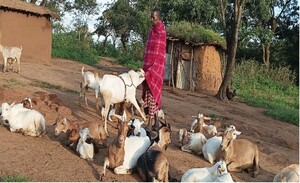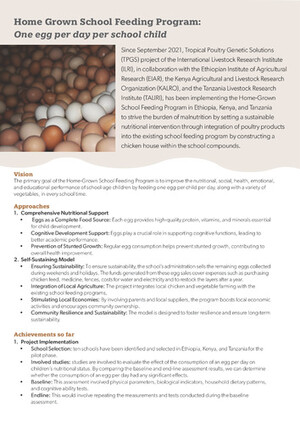
On-station performance evaluation of improved tropically adapted chicken breeds for smallholder poultry production systems in Nigeria
Abstract
Availability of appropriate genetics is important for the development of smallholder poultry (SHP). The biological potential of improved dual purpose chicken germplasms was evaluated in Nigeria.A total of six breeds (Fulani, FUNAAB Alpha, Kuroiler, Noiler, Sasso, and Shika-Brown) were tested on-station, in deep litter houses at two test centres (Public and private facility) for 504 days. Birds were fed ad libitum for the first 140 days after which restricted feeding was practised.Lowest and highest hatchability of eggs set was 55% (FUNAAB Alpha) and 89% (Sasso), respectively. At 140 days, male live weights were 200%–300 % higher than the local chickens (975 g) except Shika-Brown (152%) and Fulani (135%). Lowest (p < 0.05) age at first egg was 119 days for Shika-Brown and 120 days for FUNAAB Alpha and Kuroiler. Highest hen-housed egg production was 192 for Shika-Brown, and feed intake per dozen eggs was lowest (p < 0.05) for Shika-Brown (2.9 kg) and FUNAAB Alpha (2.9 kg). Mortality rate of the locally sourced breeds (Fulani, FUNAAB Alpha, Noiler, and Shika-Brown) was significantly lower (p < 0.05) than the foreign-sourced breeds (Kuroiler, Sasso) during brooding, growing and laying.Results from this study identified FUNAAB Alpha and Noiler as being more suitable for dual-purpose functions (egg and meat), while Sasso and Kuroiler (meat) and Shika-Brown (egg) were observed to be better suited for single purpose functions. These findings could guide the introduction of smallholder poultry-specific hybrid germplasms for the development of the smallholder poultry production systems in Nigeria.
Citation
Bamidele, O., Sonaiya, E.B., Adebambo, O.A. and Dessie T. 2020. On-station performance evaluation of improved tropically adapted chicken breeds for smallholder poultry production systems in Nigeria. Tropical Animal Health and Production 52:1541–1548.










